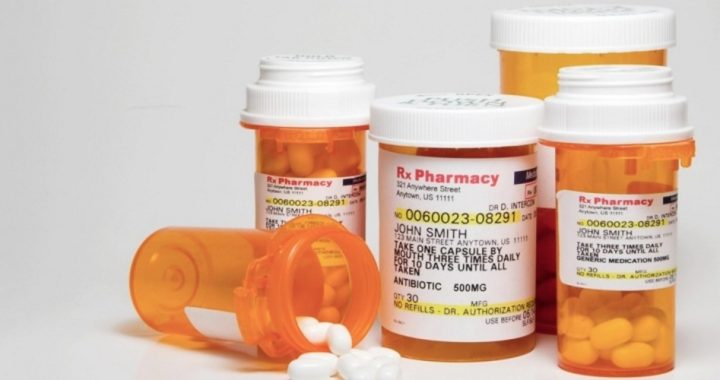
As President Obama’s landmark healthcare law penetrates deeper into implementation, signs of medical rationing are sprouting, as 16 states have enacted a limit on the number prescription drugs they will insure for Medicaid recipients. The latest state to institute a cap under the state-federal health insurance program is Illinois, which is placing its limit at four drugs per month.
Medicaid, a federal health program that works in conjunction with state governments, is a chief component of the Affordable Care Act — also known as ObamaCare — because the law boosts the income cap on eligibility, leading to a spike in the number of people covered by the program. Considering the expanded coverage, along with a federal premium subsidy for Americans earning up to 400 percent of the poverty rate, a significantly larger percentage of the population will be dependent on the government for their healthcare needs.
The drug limits vary from state to state, as Mississippi has set a cap of two brand-name drugs per month, while Arkansas adults are capped at six drugs per month. Up until June, Alabama had the country’s most frugal Medicaid drug limit after restricting patients to only one brand-name drug a month, with HIV and psychiatric drugs excluded. Beginning August 1, however, the state will revert to its previous four-drug limit, after the rule salvaged more funding than expected and the state was awarded money from a settlement with a pharmaceutical firm.
Doctors and other critics worry the cost-cutting measures could be detrimental to patients, who typically must receive a state exemption in order to go beyond the purported limit. “We understand the state is trying to get its Medicaid budget under control,” asserts Dr. William Werner, president of the Illinois State Medical Society. “But our concern is it not be a hardship for patients and a hassle for doctors in the execution.”
Phil Galewitz with Kaiser Health News, a news organization covering healthcare policy and politics, says the Medicaid drug limits will not be a widespread problem. “Drugs make up a fair amount of costs for Medicaid. A lot of states have said a lot of drugs are available in generics where they cost less, so they see this sort of another move to push patients to take generics instead of brand,” Galewitz said Monday on C-SPAN’s Washington Journal. “It only hurts a limited number of patients, ‘cause obviously it hurts patients who are taking multiple brand name drugs in the case of Alabama, Illinois. Some of the states are putting the limits on all drugs. It’s another place to cut. It doesn’t hurt everybody, but it could hurt some.”
However, Galewitz adds, states enacting these limits have put doctors and patients in a difficult position. “Some doctors I talked to would work with patients with asthma and diabetes,” he continued. “[A]nd sometimes it’s tricky to get the right drugs and the right dosage to figure out how to control some of this disease, and just when they get it right, now the state is telling them that, ‘Hey, you’re not going to get all this coverage. You may have to switch to a generic or find another way.’”
In addition to the Medicaid dilemma, healthcare experts are predicting severe physician shortages, as ObamaCare is expected to expand insurance coverage to millions of uninsured people. The New York Times reports that an economically-depressed region in Southern California, the Inland Empire, is expecting widespread shortages, as ObamaCare will be extending health coverage in the area to over 300,000 people by 2014:
Other places around the country, including the Mississippi Delta, Detroit and suburban Phoenix, face similar problems. The Association of American Medical Colleges estimates that in 2015 the country will have 62,900 fewer doctors than needed. And that number will more than double by 2025, as the expansion of insurance coverage and the aging of baby boomers drive up demand for care. Even without the health care law, the shortfall of doctors in 2025 would still exceed 100,000.
Health experts say there is no quick fix to the problem, and there is virtually nothing the government or medical industry can do to fill the gap by 2014, when the law begins providing coverage to some 30 million Americans. The problem is it takes about a decade to fully train a physician.
“We have a shortage of every kind of doctor, except for plastic surgeons and dermatologists,” asserted Dr. Richard Olds, the dean of a new medical institution at the University of California, Riverside, established partly to address the area’s looming doctor shortages. “We’ll have a 5,000-physician shortage in 10 years, no matter what anybody does.”
Some describe the dilemma as an “invisible problem,” as the overwhelming majority of patients will still receive care, but the process will be more difficult. In Riverside, for example, residents have been driving longer distances to see doctors, suffering from exhausting waiting lists, and sometimes even foregoing care altogether.
“It results in delayed care and higher levels of acuity,” said Dustin Corcoran, CEO of the California Medical Association, which represents 35,000 doctors. People “access the health care system through the emergency department, rather than establishing a relationship with a primary care physician who might keep them from getting sicker.”
Photo: Thinkstock



